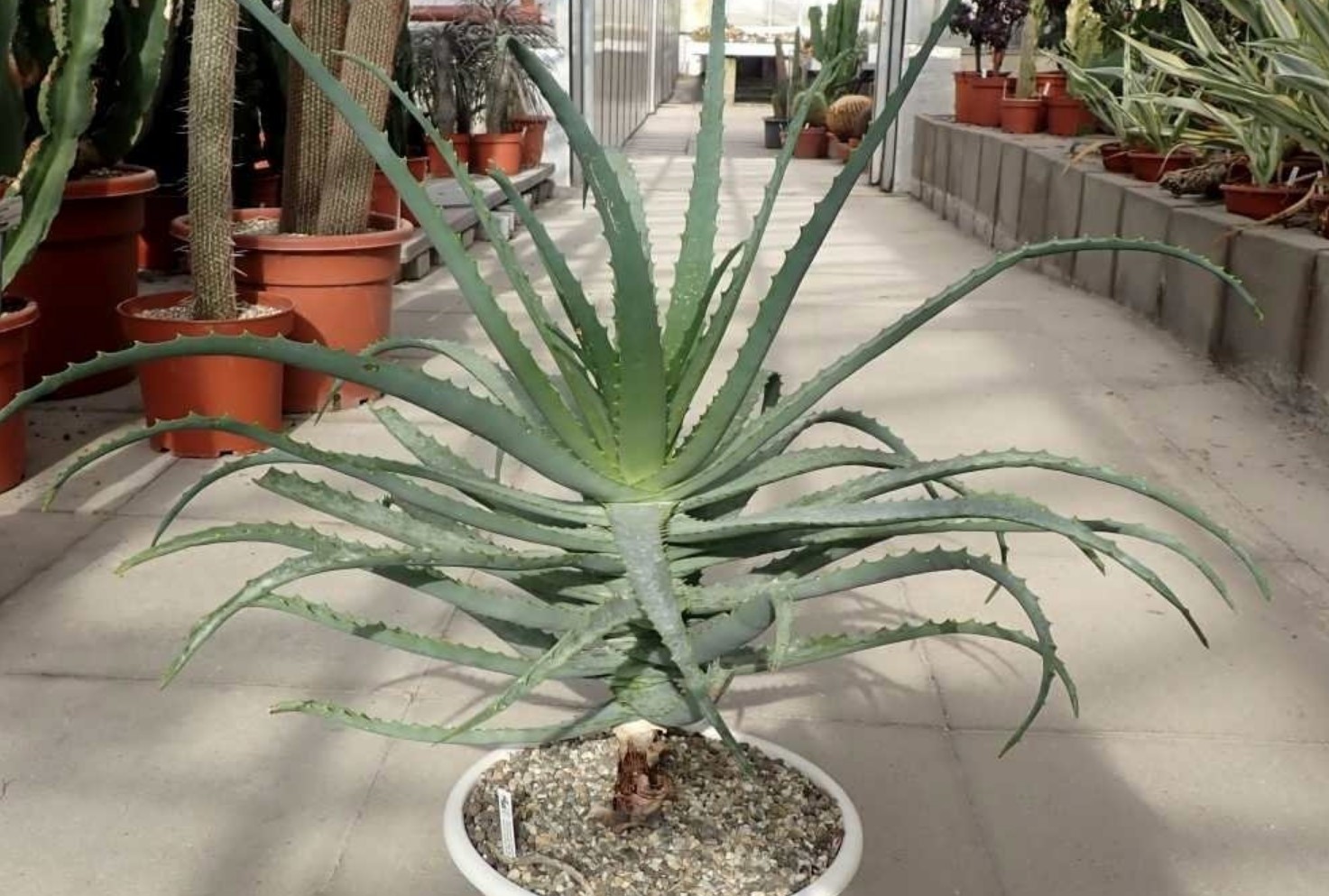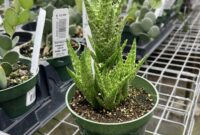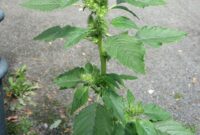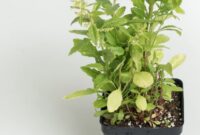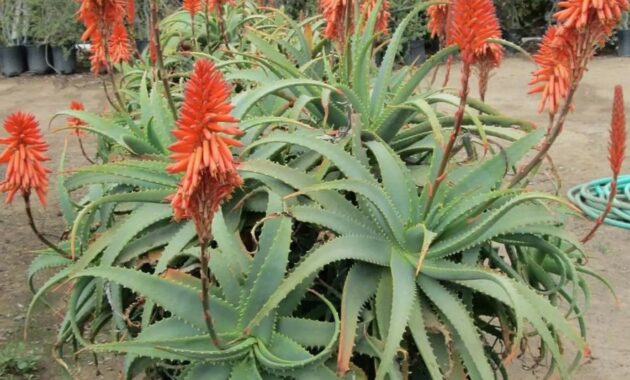
What is Aloe Arborescens?
Aloe arborescens, often called the Tree Aloe, is a succulent plant species native to South Africa. It’s known for its tall, tree-like appearance and its impressive medicinal properties. While it might not be as widely recognized as its cousin, Aloe vera, it offers a unique set of benefits and is becoming increasingly popular among health enthusiasts.
How to Grow Aloe Arborescens
Growing Aloe arborescens is relatively easy, making it a great choice for both novice and experienced gardeners. Here’s a simple guide:
- Soil: Choose a well-draining soil mix. A combination of cactus soil and perlite works well.
- Sunlight: Place your plant in a sunny location. It thrives in bright, indirect sunlight.
- Watering: Water your plant deeply but infrequently. Allow the soil to dry out completely between waterings.
- Temperature: These plants prefer warm temperatures. Avoid exposing them to freezing conditions.
- Fertilizing: Fertilize your plant once or twice a year with a balanced liquid fertilizer diluted to half strength.
Aloe Arborescens Care Tips
- Pot Size: Choose a pot that’s slightly larger than the root ball.
- Repotting: Repot your plant every 2-3 years or when it becomes root-bound.
- Pruning: Prune away dead or damaged leaves to maintain a healthy appearance.
Medicinal Uses of Aloe Arborescens
Aloe arborescens has been used for centuries in traditional medicine to treat a variety of ailments. Some of its potential medicinal uses include:
- Skin Care: The gel extracted from the leaves can soothe sunburns, acne, and other skin irritations.
- Digestive Health: It may help alleviate digestive issues like constipation and heartburn.
- Immune System Boost: Regular consumption of Aloe arborescens juice may strengthen the immune system.
- Anti-inflammatory Properties: It can reduce inflammation and pain.
- Antioxidant Effects: The plant contains antioxidants that can protect cells from damage.
Aloe Arborescens vs. Aloe Vera
While both Aloe arborescens and Aloe vera share similar medicinal properties, they differ in appearance and potency. Aloe arborescens is generally taller and has a more woody stem. It is also believed to be more potent than Aloe vera, making it a popular choice for medicinal use.
Pruning Aloe Arborescens
Pruning your Aloe arborescens can help maintain its shape and encourage new growth. Here’s how to prune it:
- Sterilize Tools: Use clean, sterilized pruning shears to prevent the spread of diseases.
- Cut Off Dead Leaves: Remove any dead or damaged leaves at the base of the plant.
- Shape the Plant: Trim away any overgrown or unsightly branches.
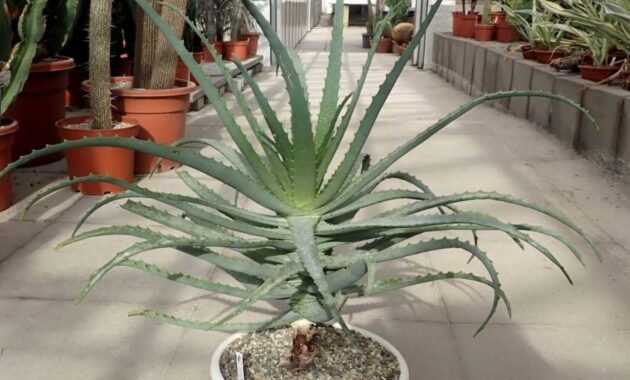
Aloe Arborescens Propagation Methods
There are two primary methods for propagating Aloe arborescens:
- Offset Propagation: Gently remove offsets (baby plants) from the base of the mother plant and pot them individually.
- Stem Cuttings: Cut a healthy stem section and allow the cut end to dry for a few days before planting it in well-draining soil.
Aloe Arborescens Light Requirements
Aloe arborescens thrives in bright, indirect sunlight. It can tolerate some direct sunlight, but prolonged exposure to intense sunlight can scorch the leaves.
Watering Aloe Arborescens
Overwatering is a common mistake when caring for Aloe arborescens. Water your plant deeply but infrequently. Allow the soil to dry out completely between waterings.
Aloe Arborescens Gel for Skin Care
The gel extracted from the leaves of Aloe arborescens can be applied directly to the skin to soothe sunburns, acne, and other skin irritations. It can also help reduce inflammation and promote healing.
Health Benefits of Aloe Arborescens
In addition to its skin care benefits, Aloe arborescens offers a range of health benefits, including:
- Improved Digestion: It can help alleviate digestive issues like constipation and heartburn.
- Boosted Immunity: Regular consumption of Aloe arborescens juice may strengthen the immune system.
- Reduced Inflammation: It can reduce inflammation and pain.
- Antioxidant Protection: The plant contains antioxidants that can protect cells from damage.
Aloe Arborescens Plant for Home Gardens
Aloe arborescens is a beautiful and versatile plant that can add a touch of exotic beauty to any home garden. Its unique appearance and low-maintenance nature make it a popular choice for indoor and outdoor gardens.
Aloe Arborescens Soil Type
A well-draining soil mix is essential for the health of your Aloe arborescens plant. A combination of cactus soil and perlite works well. Avoid using heavy, clay-based soils that retain too much moisture.
Indoor Care for Aloe Arborescens
Aloe arborescens can thrive indoors with proper care. Place your plant in a bright, sunny location and water it sparingly. Avoid overwatering, as this can lead to root rot.
Best Fertilizer for Aloe Arborescens
Fertilize your Aloe arborescens once or twice a year with a balanced liquid fertilizer diluted to half strength. Avoid overfertilizing, as this can damage the plant.
Aloe Arborescens Plant Growth Stages
Aloe arborescens is a slow-growing plant. It typically goes through the following growth stages:
- Seedling Stage: The plant starts as a small seedling.
- Juvenile Stage: The plant grows taller and develops a woody stem.
- Mature Stage: The plant reaches its full height and begins to produce offsets.
Healing Properties of Aloe Arborescens
Aloe arborescens has been used for centuries to treat a variety of ailments. Its healing properties are attributed to the presence of various bioactive compounds, including vitamins, minerals, and enzymes.
Common Pests for Aloe Arborescens
Aloe arborescens is relatively pest-resistant. However, it can be susceptible to mealybugs and scale insects. If you notice any pests, treat them with insecticidal soap or neem oil.
Aloe Arborescens Plant Lifespan
With proper care, Aloe arborescens can live for many years. Some plants can live for decades.
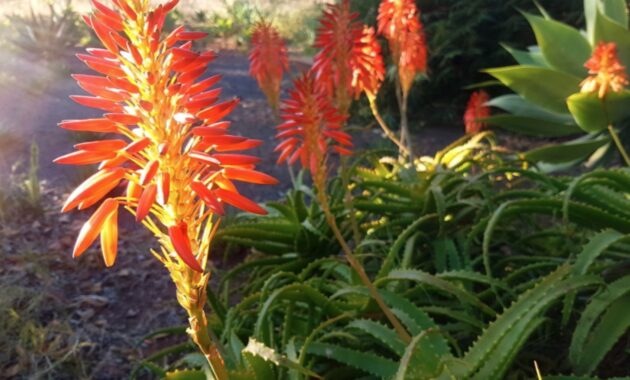
Aloe Arborescens Medicinal Properties
Aloe arborescens has a wide range of medicinal properties, including:
- Antibacterial: It can help fight bacterial infections.
- Antifungal: It can help treat fungal infections.
- Antiviral: It can help combat viral infections.
- Anti-inflammatory: It can reduce inflammation and pain.
- Antioxidant: It can protect cells from damage.
Conclusion
Aloe arborescens is a versatile and beneficial plant that can be enjoyed both indoors and outdoors. Its medicinal properties, ease of care, and attractive appearance make it a valuable addition to any home or garden. By following the tips provided in this article, you can successfully grow and care for your Aloe arborescens plant and reap its many benefits.
FAQs
- Can I eat Aloe arborescens directly from the plant?
While the gel from the leaves can be applied topically, it’s generally not recommended to consume it directly from the plant. It’s best to purchase processed Aloe arborescens products. - How often should I repot my Aloe arborescens plant?
Repot your plant every 2-3 years or when it becomes root-bound. Choose a pot that’s slightly larger than the root ball. - Can I propagate Aloe arborescens from leaf cuttings?
While it’s possible to propagate Aloe arborescens from leaf cuttings, it’s generally more successful to propagate it from stem cuttings or offsets. - What are the side effects of using Aloe arborescens?
Aloe arborescens is generally safe for most people. However, some people may experience allergic reactions, such as skin irritation or digestive upset. - Can I use Aloe arborescens to treat specific health conditions?
While Aloe arborescens has many potential health benefits, it’s important to consult with a healthcare professional before using it to treat any specific health condition.
